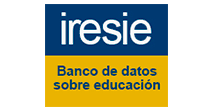A FORMAÇÃO DOCENTE NA VISÃO DOS MINISTROS DE EDUCAÇÃO E CHEFES DE ESTADO DA UE
DOI:
https://doi.org/10.5216/ia.v38i2.26132Palavras-chave:
Formação docente, Educação e Formação no EEES, Política educacionalResumo
O presente artigo problematiza o ordenamento político que deu origem ao Espaço Europeu de Educação Superior, e nele a formação docente instituída à luz dos Comunicados da Comissão Europeia, documentos aprovados e resoluções publicadas no Diário Oficial da União Europeia que desencadeiam um modelo de educação e formação de profissionais para os Estados membros voltado para a aprendizagem ao longo da vida, propondo converter a universidade e a escola em agências de serviços. Analisa no ciclo de conferências de ministros e chefes de Estado os eixos estratégicos, as competências básicas, habilidades e aptidões que se exigem dos alunos, de modo a aproximar a escola das empresas, além de desenvolver o espírito empresarial nos indivíduos em todos os níveis. Aponta, ainda que, durante o processo associam a formação de professores a um tipo de crescimento econômico conservador em que flexibilidade, empregabilidade, competitividade, individualismo, eficiência, cultura digital e racionalidade como pressupostos condutores das políticas e as práticas de educação.Downloads
Downloads
Publicado
Como Citar
Edição
Seção
Licença
A Inter-Ação utiliza como base para transferência de direitos a licença Creative Commons Attribution 4.0 para periódicos de acesso aberto (Open Archives Iniciative - OAI). Por acesso aberto entende-se a disponibilização gratuita na Internet, para que os usuários possam ler, baixar, copiar, distribuir, imprimir, pesquisar ou referenciar o texto integral dos documentos, processá-los para indexação, utilizá-los como dados de entrada de programas para softwares, ou usá-los para qualquer outro propósito legal, sem barreira financeira, legal ou técnica.
Autores que publicam neste periódico concordam com os seguintes termos:
1) Autores mantém os direitos autorais e concedem à revista o direito de primeira publicação, com o trabalho simultaneamente licenciado sob a Licença Creative Commons Attribution que permite o compartilhamento do trabalho com reconhecimento da autoria e publicação inicial nesta revista.
2) Autores têm autorização para assumir contratos adicionais separadamente, para distribuição não-exclusiva da versão do trabalho publicada nesta revista (ex.: publicar em repositório institucional ou como capítulo de livro), com reconhecimento de autoria e publicação inicial nesta revista.
3) Autores têm permissão e são estimulados a publicar e distribuir seu trabalho online (ex.: em repositórios institucionais ou na sua página pessoal) a qualquer ponto antes ou durante o processo editorial, já que isso pode gerar alterações produtivas, bem como aumentar o impacto e a citação do trabalho publicado.















